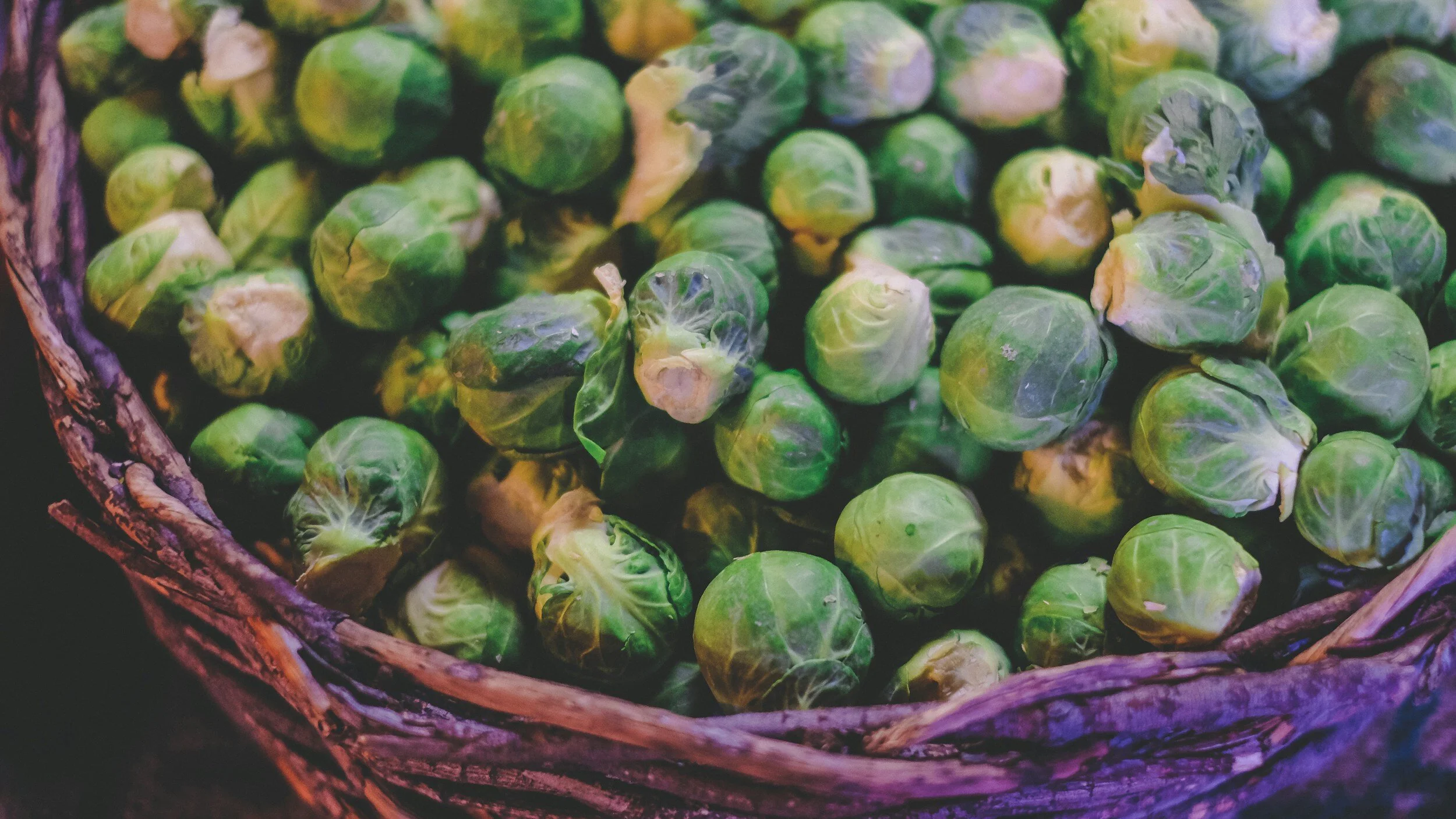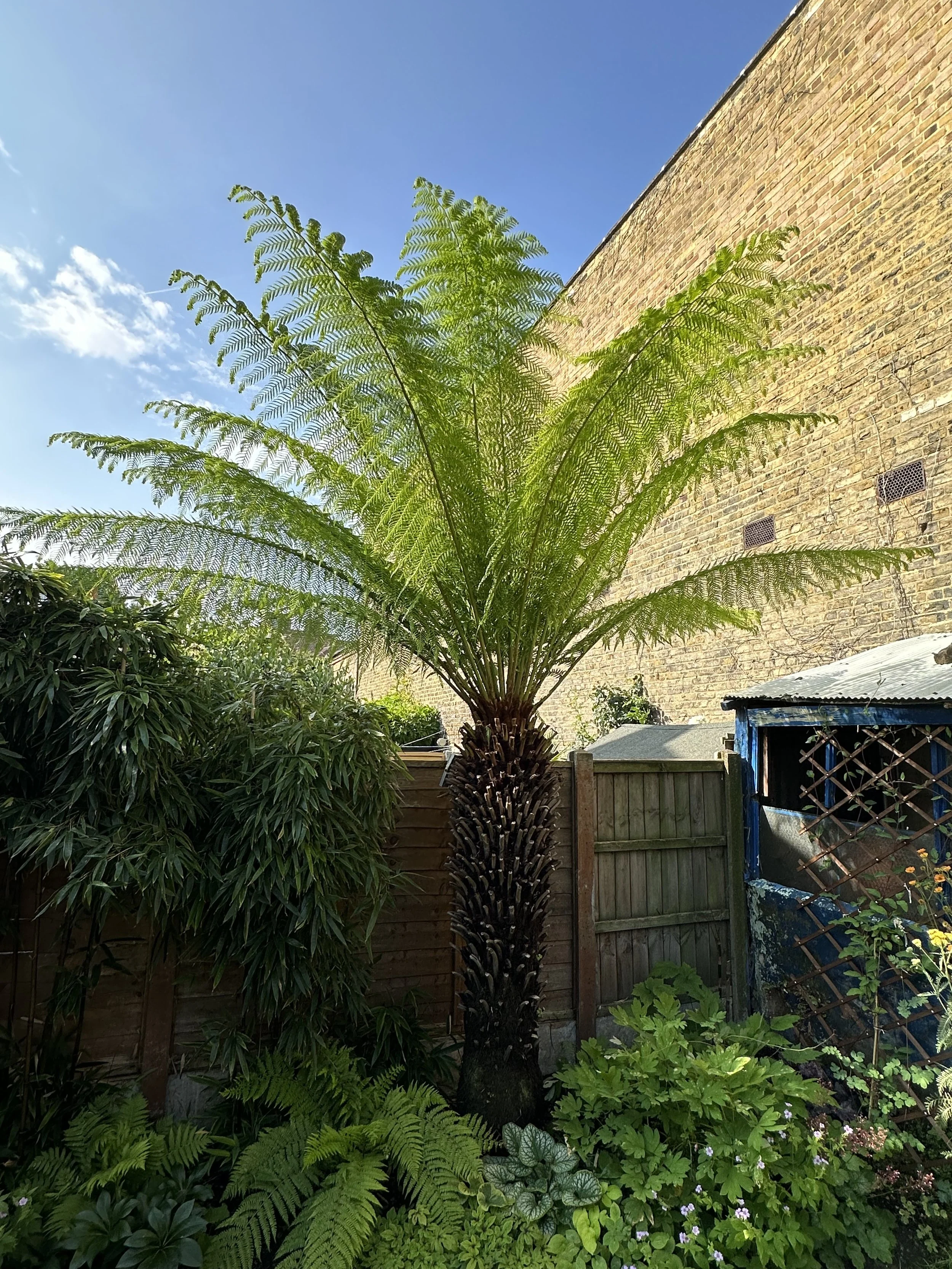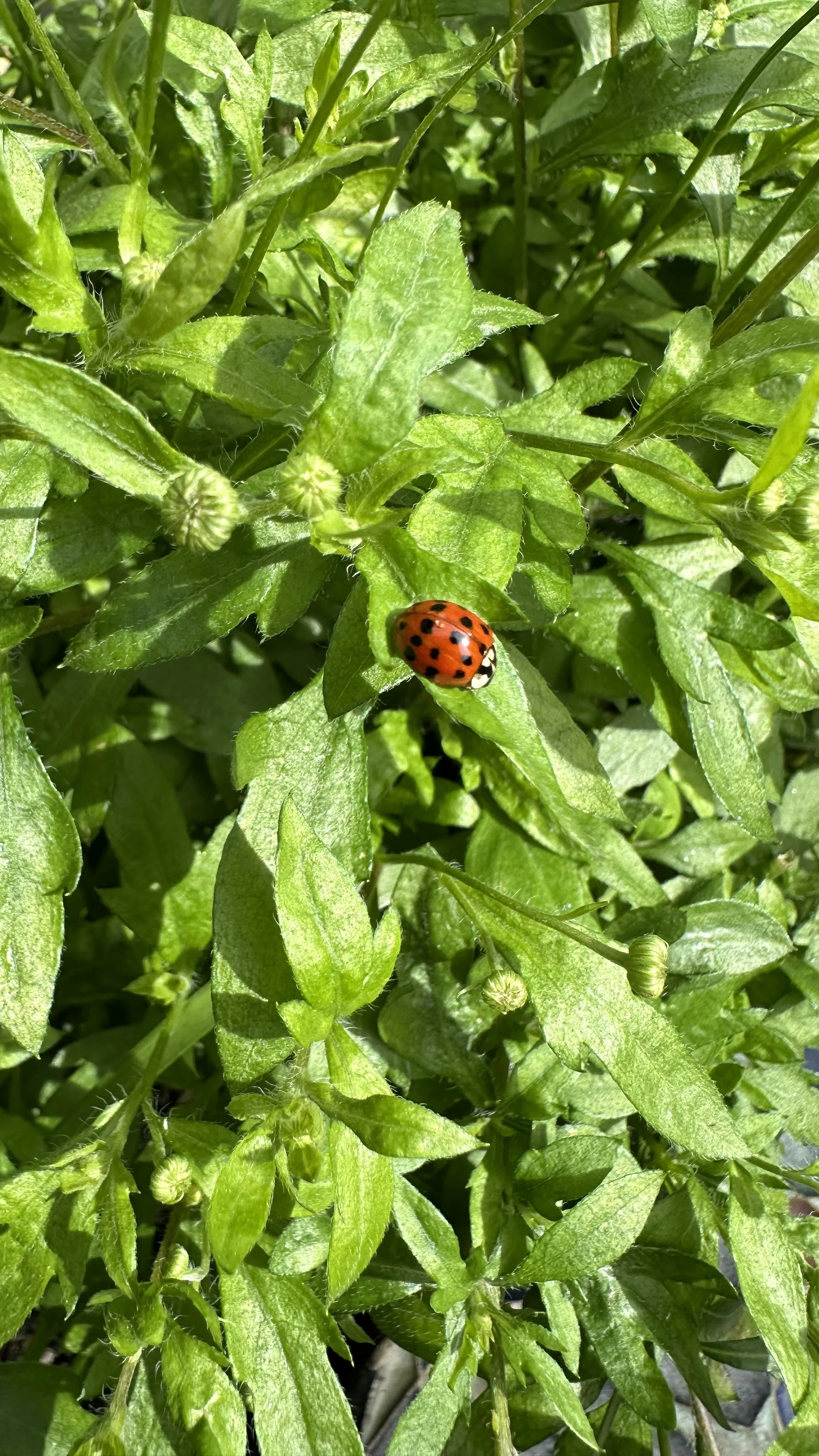Companion Plants for Healthy Brussels Sprouts
This website is reader-supported - thank you! This post may contain affiliate links. As an Amazon Associate, I earn from qualifying purchases at no extra cost to you.
Here we're delving into the world of Brussels sprouts, those delightful little green orbs that have become a staple in gardens and kitchens.
But did you know that the success of your Brussels sprouts can significantly depend on their neighboring plants?
That's right, the concept of companion planting plays a pivotal role in the thriving journey of your Brussels sprout plants.
Understanding sprouts companion plants can be a game-changer.
Knowing which brussels sprouts companion to choose can make all the difference.
Companion planting is not just about growing brussels sprouts; it's about creating a harmonious community in your garden where each plant, from the sprout plants to their leafy neighbors, supports and enhances each other's growth.
However, it's equally crucial to be aware of the worst companion plants for these sprouts.
Not all relationships in the garden are beneficial.
Identifying which plants could potentially be the worst companion for your Brussels sprouts can save you a lot of trouble down the line.
As we explore the ins and outs of brussel sprouts companion planting, we'll uncover the secrets to growing Brussels sprouts that are not just surviving, but thriving.
From the best sprouts companion choices to the nuances of sprout plants' needs, this guide is designed to arm you with all the knowledge you need for a flourishing garden.
Want to learn more about companion planting?
Check out my guides:
Best Companion Plants for Brussels Sprouts
When it comes to finding the perfect neighbors for your Brussels sprouts, the key lies in understanding what each companion brings to the table (or the garden, in this case).
Let's delve into some of the top companion plants and their unique benefits:
Herbs and Flowers
Marigolds:
These vibrant flowers are more than just eye candy in your garden.
They're known for their ability to repel common pests like nematodes and aphids, which can be a nightmare for Brussels sprouts.
Planting marigolds nearby creates a natural, pest-repellent barrier.
Here are the marigolds I recommend growing:
Thyme:
This herb isn't just for seasoning your dishes; it's a formidable ally against cabbage worms, a common enemy of Brussels sprouts.
Thyme’s strong scent is a natural deterrent, making it an excellent companion.
To learn more about growing thyme, check out my guide: Companion Plants for Thyme.
Here is the thyme I recommend growing:
Leafy Greens
Spinach:
Planting spinach near your Brussels sprouts offers a mutual benefit.
The spinach helps to retain moisture in the soil, creating a more hospitable environment for the sprouts' growth.
Here is the spinach I recommend:
Swiss Chard:
This leafy green doesn't compete aggressively for nutrients, making it a peaceful cohabitant.
Swiss chard also adds to the overall biodiversity of your garden, attracting beneficial insects and promoting a healthy ecosystem.
Here is the Swiss Chard I recommend:
Root Vegetables
Carrots:
Carrots are like the underground architects of your garden.
Their deep roots help to loosen and aerate the soil, allowing for better water and nutrient penetration, which benefits the root system of Brussels sprouts.
Here are the carrot seeds I recommend:
Alliums
Onions and Garlic:
These pungent alliums are great companions for Brussels sprouts.
Garlic and onions have strong scents are effective in deterring common pests like aphids and some beetles.
Plus, they occupy a different space in the garden bed, ensuring efficient use of space.
Here are the onions I recommend:
Cruciferous Companions
Broccoli and Cauliflower:
As fellow members of the cruciferous family, these vegetables share similar growth requirements with Brussels sprouts.
Broccoli and cauliflower can coexist harmoniously, allowing for a diverse yet compatible planting scheme.
Here is the cauliflower I recommend:
Plants to Avoid Near Brussels Sprouts
While many plants make excellent neighbors for Brussels sprouts, there are some you should keep at a distance.
Understanding which plants can negatively impact the growth and health of your Brussels sprouts is crucial for a thriving garden.
Here's a look at some of the plants that are considered incompatible companions and the reasons why:
Strawberries
Competition for Nutrients:
Strawberries and Brussels sprouts do not make a good pair primarily due to their competing nature for nutrients.
Both are heavy feeders, meaning they require a lot of nutrients from the soil.
When planted too close, they can starve each other of the necessary nutrients, leading to poor growth in both.
Disease Risk:
Strawberries can be susceptible to verticillium wilt, a soil-borne disease.
Unfortunately, Brussels sprouts are also prone to this disease. Planting them together increases the risk of both plants being affected.
Pole Beans
Nitrogen Imbalance:
Pole beans, like most legumes, fix nitrogen in the soil.
While this might sound beneficial, Brussels sprouts, being heavy feeders, require a balanced soil environment.
Excess nitrogen can lead to lush foliage in Brussels sprouts but poor development of the sprouts themselves.
Shading and Physical Interference:
The climbing nature of pole beans can create shading issues.
Brussels sprouts need full sun to thrive, and the shadow cast by pole beans can impede their growth.
Additionally, the physical structure of bean vines can interfere with the upright growth habit of Brussels sprouts.
Peppers and Tomatoes
Similar Disease Susceptibilities:
Both peppers and tomatoes are susceptible to several diseases that can also affect Brussels sprouts, such as early blight and bacterial spot.
Planting them in close proximity can increase the risk of disease transmission.
Different Growth Requirements:
Peppers and tomatoes prefer warmer growing conditions, while Brussels sprouts thrive in cooler temperatures.
This disparity in environmental needs can lead to a mismatch in care and cultivation practices.
Melons and Squashes
Space Hogging:
Melons and squashes are known for their sprawling vines.
They can easily overtake the space, encroaching on the area required for Brussels sprouts to grow.
This can lead to a struggle for space and sunlight.
Moisture Competition:
These vine crops require a lot of water, and their extensive root systems can draw moisture away from Brussels sprouts, leaving them water-stressed.
Want to learn more about companion planting? Check out my guides:
Companion Planting Tips
Successful companion planting with Brussels sprouts involves more than just knowing which plants to pair together.
It requires a thoughtful approach to how you plant, care for, and maintain your garden.
Here are some valuable tips to enhance your companion planting strategy, ensuring your Brussels sprouts and their companions thrive together:
Understanding Soil Needs
Nutrient-Rich Soil:
Brussels sprouts are heavy feeders, meaning they thrive in nutrient-rich soil.
Ensure that the soil is well-amended with organic matter like compost or aged manure to provide a strong nutrient base for all the plants in the garden.
Check out my guide A Simple Recipe for Rich Compost Tea.
pH Balance:
These sprouts prefer slightly acidic to neutral soil (pH 6.0 to 7.0).
Test your soil and adjust accordingly to create an optimal growing environment. Remember, some companion plants might have different pH preferences, so aim for a balance.
Here is the soil pH tester I recommend:
Spacing and Planting Techniques
Adequate Spacing:
To avoid competition for nutrients and sunlight, ensure each plant has enough room to grow.
Follow recommended spacing guidelines for each plant variety.
For Brussels sprouts, typically allow 18 to 24 inches between plants and 24 to 30 inches between rows.
Interplanting:
Utilize interplanting techniques by mixing your Brussels sprouts with their companions in the same area.
This maximizes garden space and creates a diverse ecosystem that can deter pests and diseases.
Watering and Mulching
Consistent Watering:
Brussels sprouts require consistent moisture, especially during head formation.
Implement a regular watering schedule, and consider drip irrigation to keep the soil evenly moist without over-saturating.
Mulching:
Apply a layer of organic mulch around the plants. This helps retain soil moisture, suppress weeds, and maintain an even soil temperature.
Here is the mulch I recommend:
Pest Management
Natural Deterrents:
Utilize the natural pest-deterrent properties of companion plants. For example, marigolds and thyme can repel certain insects.
However, be vigilant and ready to intervene if pest problems persist.
Attract Beneficial Insects:
Companion planting can attract beneficial insects like ladybugs and bees.
Include flowering plants like lavender or borage to draw these helpful critters into your garden.
Learn more: Borage Companion Planting: The Best Pairings.
Season Consideration
Seasonal Planting:
Brussels sprouts are a cool-season crop, so plan your companion planting accordingly.
Pair them with other cool-season plants or those that can tolerate cooler temperatures in the early stages of growth.
Succession Planting:
To extend the harvest period, consider succession planting.
Stagger the planting of Brussels sprouts and their companions every few weeks for a continuous supply.
Learn more with my guide: What is Succession Planting? Grow More in Less Space.
Rotation for Soil Health
Crop Rotation:
Practice crop rotation by not planting Brussels sprouts or other brassicas in the same spot year after year.
This helps prevent soil-borne diseases and maintains soil health.
Overall Garden Harmony
Aesthetic and Functional Harmony:
While focusing on the practical benefits, also consider the aesthetic appeal.
Create a visually pleasing garden layout that balances the heights, colors, and textures of your plants.
Monitoring and Adjustments:
Keep an eye on how your plants interact.
Companion planting is often about trial and error, so be prepared to make adjustments as needed.
Equip your urban green space with my recommend top tier tools.
FAQs
Can you plant cabbage and Brussels sprouts together?
Yes, you can plant cabbage and Brussels sprouts together.
They belong to the same family (Brassicaceae) and share similar growing conditions and needs.
However, there are a few considerations:
Pest Attraction:
Both cabbage and Brussels sprouts can attract similar pests like cabbage worms.
It's essential to monitor for pests and implement control methods if necessary.
Nutrient Requirements:
Since both are heavy feeders, ensure the soil is rich in nutrients and possibly supplement with additional fertilizer throughout the growing season.
Spacing:
Provide ample space between these plants to avoid overcrowding, as both cabbage and Brussels sprouts need room to develop their heads.
Wrap-up
As we wrap up our exploration of companion planting for Brussels sprouts, let's reflect on the key takeaways and the beautiful symphony that a well-planned garden can create.
Remember, the journey of nurturing Brussels sprouts includes more than just planting and watering.
It involves understanding the intricate relationships between different plants and how they can mutually benefit each other.
Choosing the right Brussels sprout companion plants can significantly enhance your gardening experience.
These companions not only contribute to the health and vigor of your sprouts but also add a layer of protection against common insect pests.
By selecting plants that complement the growth cycle of your Brussels sprouts, you turn your garden into a resilient and productive space.
It's fascinating to see how the leaves of your sprouts and their companions work together, creating a natural defense system against pests and diseases.
This synergy is particularly important for Brussels sprouts, a season crop that requires careful attention and nurturing.
The right companions can make a world of difference in their growth, yield, and overall health.
In essence, the art of companion planting is about creating a balanced and thriving ecosystem in your garden.
It's about making smart choices in what sprouts include in their immediate environment.
As you implement these practices, you'll witness a remarkable transformation not only in your Brussels sprouts but in your entire garden landscape.
So, embrace this knowledge and watch as your Brussels sprouts and their companions flourish together in harmony.
Pin this post to save it for later!











































